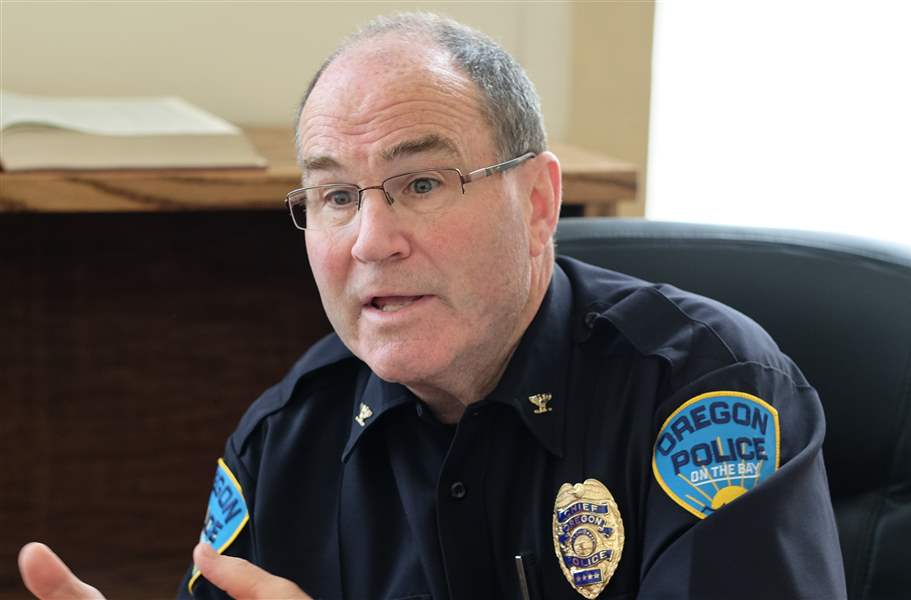
Ohio officers tasked with keeping race, gender data
Process aimed at reducing charges of police bias
2/27/2017
Navarre
THE BLADE
Buy This Image
COLUMBUS — A state-certification process will require that all Ohio police departments for the first time collect data on the race and gender of people they pull over in traffic stops or take aside for questioning, in an effort to reduce potential police bias against suspects.
Many large departments already collect such data, including the Ohio State Highway Patrol, which publishes annual numbers on its website.
But hundreds of smaller departments will collect the data as well.
Since most people’s interaction with police happens at traffic stops, it’s important to know who is pulled over, said Ronnie Dunn, an urban affairs professor at Cleveland State University who helped develop the standard.
“It helps provide transparency, as well as accountability,” he said. “It helps us understand exactly whom the police are having interactions with.”
The standard was approved Feb. 17 by a police relations board created by Gov. John Kasich after protests over fatal shootings of unarmed black suspects by white officers in Ohio and in the nation, including the 2014 death of 12-year-old Tamir Rice in Cleveland.
The standard deals with what’s known as bias-free policing. It takes effect in about a year. It’s the seventh standard the board has approved that includes policies on use of force, use of deadly force, recruiting, and hiring.
The standards don’t cover individual officer training, which is overseen by the Attorney General’s Office. Rather, they require agencies to have policies in place at the departmental level.
No Ohio agency will face punishment for noncompliance, other than appearing on a list to be published each March of departments opting out of certification. The state is hoping local communities will take departments not on the list to task and force them to adhere.
About half of U.S. states have laws making such data collection mandatory, Mr. Dunn said.
The data has to be analyzed carefully and compared with racial demographics of particular areas, said Mike Navarre, chief of the Oregon Police Department in suburban Toledo and the former Toledo police chief.
Stops might not always mirror the statewide percentages of minorities depending on where stops are made, said Chief Navarre.
The numbers can help agencies identify patterns of profiling and can protect departments wrongly accused of profiling by giving them data to refute claims, Chief Navarre said.
“It’s better to have it and not need it, than not have it all,” he said.
Not all departments are in favor of the collection.
Jeffrey Scott, chief of the 32-officer force at Notre Dame College in suburban Cleveland, said correctly identifying the races of drivers can be difficult, and errors can lead to unfair accusations of profiling.
“It could be a good officer doing good work and doing it correctly, but they’re inaccurately being flagged,” Chief Scott said. But his department will collect the data.
The Ohio Highway Patrol has collected the races and genders of drivers stopped by troopers since 2000. Fourteen percent of drivers stopped in 2015 were black, according to the most recent patrol data.
Census figures say 13 percent of Ohioans are black. Troopers also recorded 3,700 drivers listed as “other.”
Supervisors randomly review video of troopers’ stops each month and run monthly and quarterly reports examining troopers’ race and gender data, said Lt. Robert Sellers of the Ohio Highway Patrol.
“The public expects professional policing and these are the things we’ve put in place to provide professional services to our residents and to everybody traveling on Ohio’s roadways,” he said.